This week’s episode is titled “Hammering out the Details. ”
That group of guys known as the Early Church Fathers for the most part were pastors. They were leaders of churches who had a pastoral concern for both the Faith & their people.
The later 1st through 3rd Cs saw the Church expand around the Mediterranean basin, in a few places up into central Europe, across North Africa, across the Middle East and into Mesopotamia and the Persian East. While believers contended with periodic outbursts of persecution in Roman controlled territory, the great threat was that presented by aberrant sects that kept rising up aiming to hijack the Faith.
It’s understandable why this was such a problem in these early centuries. Christian theology was still being hammered out. In fact, it was the threat posed by aberrant groups that forced church leaders to formalize precisely what it was Christians believed. Just as today, some new wind of doctrine blows thru the church and most Christians have little idea what’s wrong with it; they just sense something is. It doesn’t sound or feel right, but they couldn’t say precisely what it is. It takes some astute pastor, Bible student, or theologian to show HOW said doctrine is contrary to Scripture. Then everyone’s clued in and has an idea of why & how that aberration or heresy is off.
Multiply that process by many years & lots more of those winds of doctrine, and you can see how a large & detailed body of Christian theology developed. Most times, church leaders turn to the Bible to compare the new idea to what’s already known to be God’s Word & Will. But sometimes what’s needed is some new words – or at least to make sure we know what the words we’re using when we explain something mean! And we need to make sure we all mean the same thing by those words. We see how important this is today when dealing with the cults. Two people can say they’re Christians, and both believe in & follow Jesus. But while one person’s “Jesus” is the eternal Son of God, conceived by the Holy Spirit in the womb of a virgin Jewish teenager named Mary, the other person’s “Jesus” is really just a manifestation of the archangel Michael, or à the human son of a god named Elohim who used to be a man on another planet a long time ago who ascended into being a god with a heavenly harem by which he produces spirits looking for human bodies. Believe it or not, that is what a couple prominent pseudo-Christian cults believe today.
My point is è we need to make sure we pour the same meaning into the words we use, especially when we’re talking theology, because what we believe about God is the most important thing about us.
We’ll see how complex & what a major deal this all was when we get to the debates about the trinity & the nature of Jesus in the 4th & 5th Cs. For now, realize that even earlier, during the latter 1st thru 3rd Cs, it was usually pastors who did most of the theological work as they dealt with the challenge of goofy teachings about God & Jesus confronting the people they led.
Let’s take a brief look at some of the major doctrinal challenges & groups that challenged the early church.
We already considered the threat of Gnosticism. We spent a whole episode on that topic because it was a huge challenge that a few letters of the NT addressed.
We considered the challenge Marcion presented, with his virulent anti-semitism & attempt to separate the God of the OT from the God of the New.
We took a brief look at Montanus and his, what we might call, early Charismatic Movement. Ws saw that while there were indeed some aberrant elements in Monantism, they did not rise to the level of heresy the Early Church ended up labeling them with.
A group we’ve not looked at yet was a kind of anti-Marcionist sect called the Ebionites. They emerged toward the end of the 1st Century & continued into the 4th. Their beliefs smack of the error the Apostle Paul deals with in his Galatian Epistle.
Ebionites said Jesus wasn’t the Eternal Son of God; he was just a successor to Moses whose mission was to enforce a strict legalism. They claimed Jesus was just a Jew who kept the law perfectly. And because He did, at his baptism, the Spirit of God descended on him, empowering him to be a prophet. This sounds a lot like one of the many Gnostic sects.
Ebionites were ascetics who avoided any & all forms of pleasure, assuming if it was pleasurable, it had to be wrong. They practiced poverty, ultra forms of self-denial, & elaborate religious rituals. They abhorred the Gospel of Grace. Their name, “Ebionites” comes from the Hebrew word meaning “Poor Ones.” They likely took this name to honor their founder, Ebion, who spurned his given-name in favor of the title “Poor One.”
What little we know about the Ebionites comes to us from the accounts of their opponents. The first Christian to write about them was Irenaeus who mentions them in his work, Against Heresies. Origen also mentions them, his account matching that of Irenaeus.
They rejected the NT in favor of a scroll known as “The Gospel According to the Hebrews.” Keeping the Jewish flavor of their origins, they met in synagogues. As would be imagined, they considered the Apostle Paul with his emphasis on salvation by grace through faith to be a dangerous heretic. To Ebionites, Jesus wasn’t the Savior; Moses was because he gave the Law. Jesus was nothing but a Solomon-like figure who proved people COULD obey the law.
When the Romans Titus laid siege to Jerusalem, the Ebionites join forces with the Gnostics. And a close reading of Paul’s letter to the Colossians gives a hint that it was this Gnostic-Ebionism that was troubling the church there.
Another group that presented a challenge to the Early church were the Manichaeists. I’m not going to go into a lot of depth here. Suffice it to say Manichaeism was a rather bizarre cousin to Gnosticism. Like the Gnostics, they were dualist; meaning they considered the spiritual realm to be unalterably good while the material world was hopelessly corrupt.
Their founder was the 3rd C mystic Mani. He proposed two opposing forces, light & darkness, forever locked in eternal combat. Salvation was defined as the victorious struggle of the Children of Light overcoming the darkness by a life of self-denial and celibacy. If some of this sounds a lot like the Zoroastrianism of Persia – Give yourself a gold star; you figured out where it came from!
Mani was a Parthian who’d grown up in a home that was nominally Christian. He was loath to give up the ancient Zoroastrianism of his peers and homeland, so he decided to mix the two. And once he’d begun, he decided to go ahead and add a dash of Buddhism, some Hinduism, & a sprinkle of Judaism. Mani’s religion was an ancient version of Baha’i – you know, just snag whatever seems most appealing from a handful of major religions, toss it all in a bowl, mix thoroughly, cook at 350 for 20 minutes, let cool, and serve with a cup of Koolaid.
But it’s not hard to understand WHY Manichaeism would appeal to so many people at that time. The Romans had brought dozens of different people under one political & economic system. Since religion was a crucial part of most people’s lives in that day, the diversity of faiths was a potential stress point that could lead to conflict. A religion that seemed to appeal to everyone because it contained a little bit of them all seemed a good move.
Let’s turn now to take a look at another key Church Leader; Clement of Alexandria.
Titus Flavius Clement was born in Athens to pagan parents. He became a Christian by studying philosophy. He settled in Alexandria in Egypt & attended a school there because he was impressed by the director’s interpretation of Scripture. When that director retired in AD 190, Clement succeeded him as head of the school, the same Origen would later take over.
Now, I hope you find this as interesting as I did. This school, while run by Christians & dedicated to Christ, was anything BUT a narrow-minded academy aimed at spitting out mind-numbed followers. The school reflected the cultural mixture of Alexandria. It welcomed Christians, pagans, and Jews who wanted the best education the time could field. The Christian directors of the school believed that the Christian faith, given a fair hearing, would prevail over other ideas. So among others, the non-Christian philosopher, Ammonius Saccas taught there. Among his students were both Origen and Plotinus, founder of Neoplatonism.
During his years as a teacher in Alexandria, Clement wrote most of his works. He followed the example of Philo, an Alexandrian Jewish scholar who’d used Greek philosophy to interpret the Old Testament. Clement adopted Philo’s allegorical method of interpreting Scripture, often quoting him at length.
Now, I need to pause & define a term I’ve used a lot, not just in this episode but in several previous = Pagan. Today, in popular usage the word ‘pagan’ is fraught with a shipload of negative baggage. If you call someone a “pagan” it’s an insult; you’re saying they’re godless & immoral.
That’s NOT what I mean here when I refer to someone as a pagan. I mean it as it’s come to be used by a growing number of alternative religious groups today. Pagans are those who’ve returned to a worldview that sees the forces of nature as worthy of worship. Witches & Wicca are pagan and draw their inspiration from the ancient world that believed in a plethora of gods & goddesses who controlled the forces of nature and exerted dominion over only certain regions. By pagan, I mean it in this technical sense; the worshippers of the Greek & Roman gods. People who believed the myths & legends of the Greco-Roman civilization.
I pause to define “pagan” because Clement wrote specifically to them, seeking to reason with them about why they ought to put their faith in Christ. In his Exhortation to the Gentiles he used the same arguments employed by the Apologists, but with more sophistication. By cherry-picking quotes, he showed an ascending revelation upward through poets, philosophers, the Cybeline oracle, & Hebrew prophets to the highest revelation; Christ.
Clement’s major work was titled Miscellanies. As the title suggests, Clement said that the seeker has to go through a “patchwork” of ideas to get to the truth, like winnowing wheat through a sieve. He called philosophy a “schoolmaster” to bring the Greek-thinker to Christ. He believed God used philosophy to lead pre-Christian Gentiles to a knowledge of the truth of Christ. Although the teaching of Christ was complete in itself, philosophy served Clement as a kind of “wall for the vineyard” to defend the truth of Christianity.
What’s of interest to us about Clement of Alexandria is the impact he had on Origen. It was his ready use of philosophy and allegorical style of interpreting Scripture that had a far-reaching consequence in the Early & Medieval Church.
Clement fled Alexandria during persecution under the Roman emperor Septimius Severus in 202 and died in Asia Minor.
Next up is Tertullian.
Tertullian was born in Carthage, North Africa, about AD 160. While his pre-christian life is sketchy, it seems he was a scholarly lawyer who was won to Christ in his 30’s.
Tertullian is reckoned one of the more important church fathers because he wrote a long list of apologetic and theological works in both Latin & Greek. His Apologeticus was addressed to the Roman governor of Carthage. It refuted the charges leveled against Christians, demonstrated the loyalty of Christians to the empire, and showed that persecution of Christians was foolish because they multiplied when persecuted.
Tertullian is rare among the Church Fathers in that he wasn’t a pastor as most were. He did teach at Carthage, but he remained a layman who devoted himself to writing works aimed at presenting the reasonableness of the Faith, both to believers and outsiders.
Tertullian became concerned over the way holiness was being neglected in the Church. When his appeals to church leaders fell on deaf ears, he decided to join the growing Montanist movement. You’ll remember it was their aberrant views about asceticism that got them into trouble with the Church. Well, their moral discipline appealed to Tertullian. In his mind, if it was a choice of staying in a spiritually lethargic & morally compromised but doctrinally-right church or joining a Spirit-filled, morally excellent group that held some questionable practices, he’d rather be part of the later and use his influence to bring them in line. His influence had been rejected by the apostolic church at Carthage so he jumped ship. Tertullian remained doctrinally orthodox until his death. His followers rejoined the church at Carthage several decades later.
Soon after conversion, Tertullian began a massive output of Christian writings occupying his last 25 years. A good part of these manuscripts, 31 Latin works, have survived to our time. These can be divided into 3 groups: Apologetics, Doctrine & Ethics.
In his apologetic works, Tertullian answered the charges against Christians made by their enemies. He refutes accusations of, get this à infanticide and incest.
Some of Christianity’s most time-honored sayings are quotes from Tertullian, such as . . .
- Christians are made, not born.
- See, they say, how these Christians love one another, for the pagans are animated by mutual hatred; how the Christians are ready even to die for one another, for the pagans themselves will sooner put to death.
- We multiply whenever we are mown down by you; the blood of Christians is seed.
- Truth persuades by teaching, but does not teach by persuading.
- Truth does not blush.
- Out of the frying pan into the fire.
- He who flees will fight again.
- It is certainly no part of religion to compel religion.
- We worship unity in trinity, and trinity in unity; neither confounding the person nor dividing the substance
It’s in Tertullian that the phrases, “If God will,” “God bless,” & “God grant” make their first appearance in writing.
Tertullian helped provide a theological position others would later draw on in the looming debates that occupied the Church for generations. It was Tertullian’s treatment of the Trinity as being 3 persons in 1 substance; the divine and human natures of Christ; the subjection of man to original sin; and Christ’s virgin birth and bodily resurrection that helped later generations articulate a cogent position on these difficult subjects.
Both Athanasius & Augustine, as well as a whole host of later church fathers, look back to Tertullian for a clue how to proceed. Tertullian appears to be the first one to use the Latin trinitas as a descriptor for the doctrine of God as 3 person in 1 Substance.
The what, when, & where of Tertullian’s death is unknown. Jerome says he lived to a great age, but we have no record of him after 225 in Carthage, making him 65 at the time of his graduation to glory.

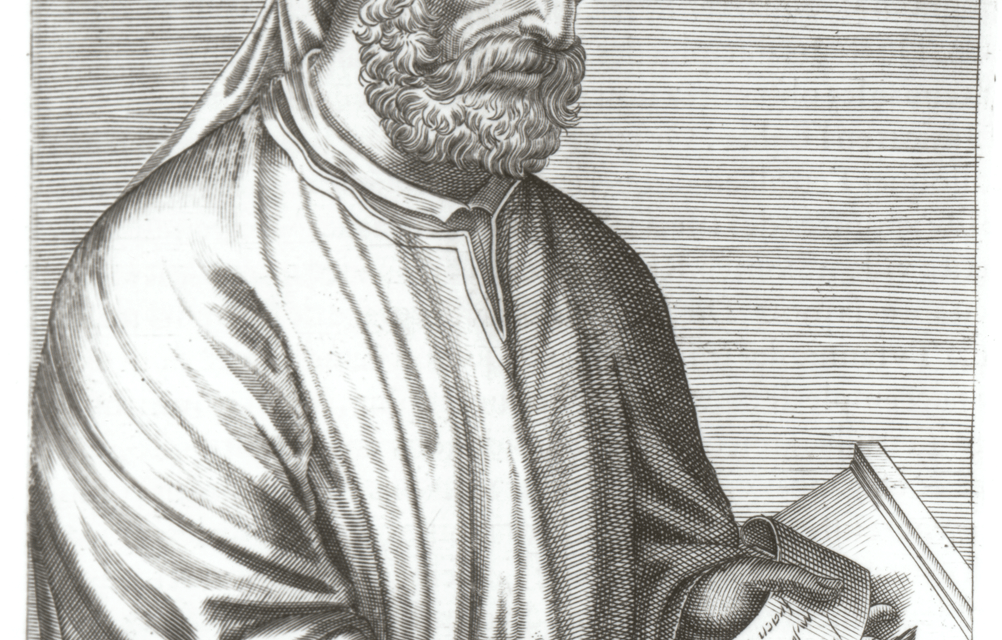
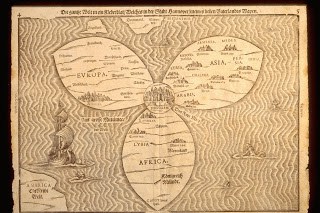
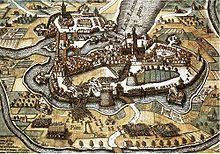
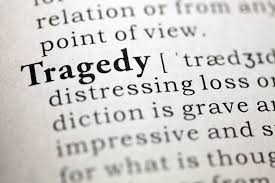
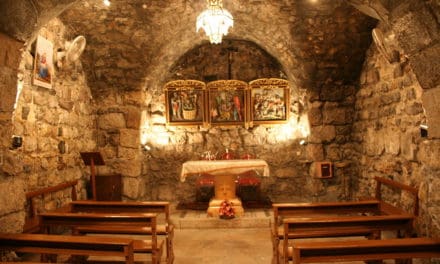
I’ve noticed in your more recent podcasts you have posted your transcript. I was wondering if you were going to do the same for these older ones? I am teaching a Church History Sunday School class and it would be greatly helpful to aid me in my teaching. (I’ll cite you and recommend my class to listen to your podcast, of course!)
Nathan,
Yes, It’s my intention to post them for all the episodes.
My web guy said it’s wise to do for reasons of people doing searches.
But it’ll take a little while to get it done.
I will send you an invitation to Google drive where you’ll find the scripts for all of them.